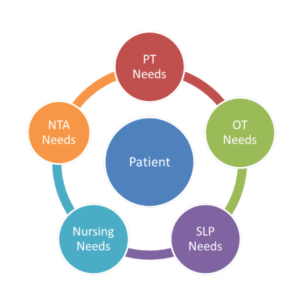HHS to shift payment from volume to value
Providers will be paid by the federal government based on care quality rather than care quantity under new, measurable goals announced by U.S. Department of Health and Human Services (HHS) Secretary Sylvia M. Burwell Monday. HHS said the announcement marked the first time in the history of the Medicare program that it has set explicit goals for alternative payment models and value-based payments.
Burwell announced a timeline that would see 30 percent of fee-for-service Medicare payments tied to quality or value through alternative payment models created under the Affordable Care Act (such as accountable care organizations or bundled payment arrangements) by the end of 2016. Fifty percent of such payments would be associated with those models by the end of 2018. HHS also set a goal of tying 85 percent of all traditional Medicare payments to quality or value by 2016 and 90 percent by 2018 through programs such as the Hospital Value Based Purchasing and the Hospital Readmissions Reduction Programs.
To accomplish similar goals outside of the Medicare program, Burwell announced the creation of a Health Care Payment Learning and Action Network, through which HHS will work with private payers, employers, consumers, providers, states and state Medicaid programs and other partners to expand alternative payment models into their programs. The network will hold its first meeting in March.
“Whether you are a patient, a provider, a business, a health plan or a taxpayer, it is in our common interest to build a healthcare system that delivers better care, spends healthcare dollars more wisely and results in healthier people,” she said in a statement.
LeadingAge and the American Health Care Association/National Center for Assisted Living (AHCA/NCAL) both expressed support for the rationale behind the announcement.
“LeadingAge has been a strong supporter of value-based payment,” Jill Sumner, the organization’s vice president for health policy and integrated services, told Long-Term Living. “LeadingAge members have demonstrated their commitment to quality through higher staffing ratios and quality outcomes in spite of the currently misaligned fee-for-service payment methodology,” she added.
The organization is encouraged by the HHS effort to align payment and quality, Sumner said, but success will require risk adjustment that reflects patient acuity, socioeconomic factors and provider characteristics. “In addition, the inclusion of the long-term care provider community in meaningful participation at all points in the creation and implementation of this initiative is imperative,” she added.
LeadingAge hopes to work with the Health Care Payment Learning and Action Network to ensure that long-term care providers are engaged in the process, Sumner said.
AHCA/NCAL President and CEO Mark Parkinson said that his organization is encouraged that the federal government has made it a priority to find “smarter ways to inject greater accountability and savings into the Medicare payment structure.” AHCA/NCAL hopes to continue to work with the federal government and others “to determine the best path forward for achieving the administration’s aggressive goals without sacrificing access to high-quality skilled nursing care for our nation’s seniors,” he said in a statement.
Read CMS fact sheets related to the announcement:
Improving Our Health Care Delivery System
Paying Providers for Value, Not Volume
I Advance Senior Care is the industry-leading source for practical, in-depth, business-building, and resident care information for owners, executives, administrators, and directors of nursing at assisted living communities, skilled nursing facilities, post-acute facilities, and continuing care retirement communities. The I Advance Senior Care editorial team and industry experts provide market analysis, strategic direction, policy commentary, clinical best-practices, business management, and technology breakthroughs.
I Advance Senior Care is part of the Institute for the Advancement of Senior Care and published by Plain-English Health Care.
Related Articles
Topics: Accountable Care Organizations (ACOs) , Executive Leadership , Medicare/Medicaid , Regulatory Compliance










